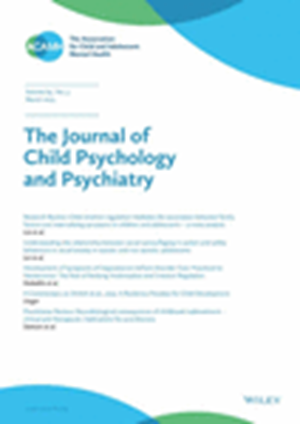分析遗传对早期神经发育特征的直接和间接影响——对Hegemann等人的评论。
IF 7
1区 医学
Q1 PSYCHIATRY
引用次数: 0
摘要
Hegemann等人的研究通过使用Trio-GCTA和多基因评分模型区分直接和间接遗传效应,促进了对早期神经发育特征的遗传结构的理解。研究结果表明,间接的遗传影响在多动、限制性和重复性行为中尤为明显,而直接影响在语言和运动发育中占主导地位。值得注意的是,父母认知和教育程度多基因得分与儿童结局之间的关联表明,潜在的保护性遗传影响。然而,一些方法上的考虑可能会影响解释。排除密切相关的个体可能会限制对延伸家族效应的检测,并且依赖主要来自欧洲的GWAS的多基因评分可能会限制普遍性。此外,目前的PGS只解释了性状遗传性的一部分,可能低估了真正的遗传贡献。未来的研究包括扩展的家庭结构、多样化的人群和替代方法来模拟基因与环境的相互作用,这对于完善早期神经发育过程的见解至关重要。本文章由计算机程序翻译,如有差异,请以英文原文为准。
Analyzing direct and indirect genetic effects on early neurodevelopmental traits - a commentary on Hegemann et al.
The study by Hegemann et al. advances understanding of the genetic architecture underlying early neurodevelopmental traits by distinguishing direct and indirect genetic effects using Trio-GCTA and polygenic score models. Findings reveal that indirect genetic effects are particularly pronounced for hyperactivity and restricted and repetitive behaviors, while direct effects dominate in language and motor development. Notably, associations between parental cognitive and educational attainment polygenic scores and child outcomes suggest potential protective genetic influences. However, several methodological considerations may affect interpretation. Excluding closely related individuals could limit the detection of extended familial effects, and reliance on polygenic scores derived from predominantly European GWAS may constrain generalizability. Furthermore, current PGS explain only a portion of trait heritability, possibly underrepresenting true genetic contributions. Future studies incorporating extended family structures, diverse populations, and alternative methods to model gene-environment interplay are essential for refining insights into early neurodevelopmental processes.
求助全文
通过发布文献求助,成功后即可免费获取论文全文。
去求助
来源期刊
CiteScore
13.80
自引率
5.30%
发文量
169
审稿时长
1 months
期刊介绍:
The Journal of Child Psychology and Psychiatry (JCPP) is a highly regarded international publication that focuses on the fields of child and adolescent psychology and psychiatry. It is recognized for publishing top-tier, clinically relevant research across various disciplines related to these areas. JCPP has a broad global readership and covers a diverse range of topics, including:
Epidemiology: Studies on the prevalence and distribution of mental health issues in children and adolescents.
Diagnosis: Research on the identification and classification of childhood disorders.
Treatments: Psychotherapeutic and psychopharmacological interventions for child and adolescent mental health.
Behavior and Cognition: Studies on the behavioral and cognitive aspects of childhood disorders.
Neuroscience and Neurobiology: Research on the neural and biological underpinnings of child mental health.
Genetics: Genetic factors contributing to the development of childhood disorders.
JCPP serves as a platform for integrating empirical research, clinical studies, and high-quality reviews from diverse perspectives, theoretical viewpoints, and disciplines. This interdisciplinary approach is a key feature of the journal, as it fosters a comprehensive understanding of child and adolescent mental health.
The Journal of Child Psychology and Psychiatry is published 12 times a year and is affiliated with the Association for Child and Adolescent Mental Health (ACAMH), which supports the journal's mission to advance knowledge and practice in the field of child and adolescent mental health.

 求助内容:
求助内容: 应助结果提醒方式:
应助结果提醒方式:


